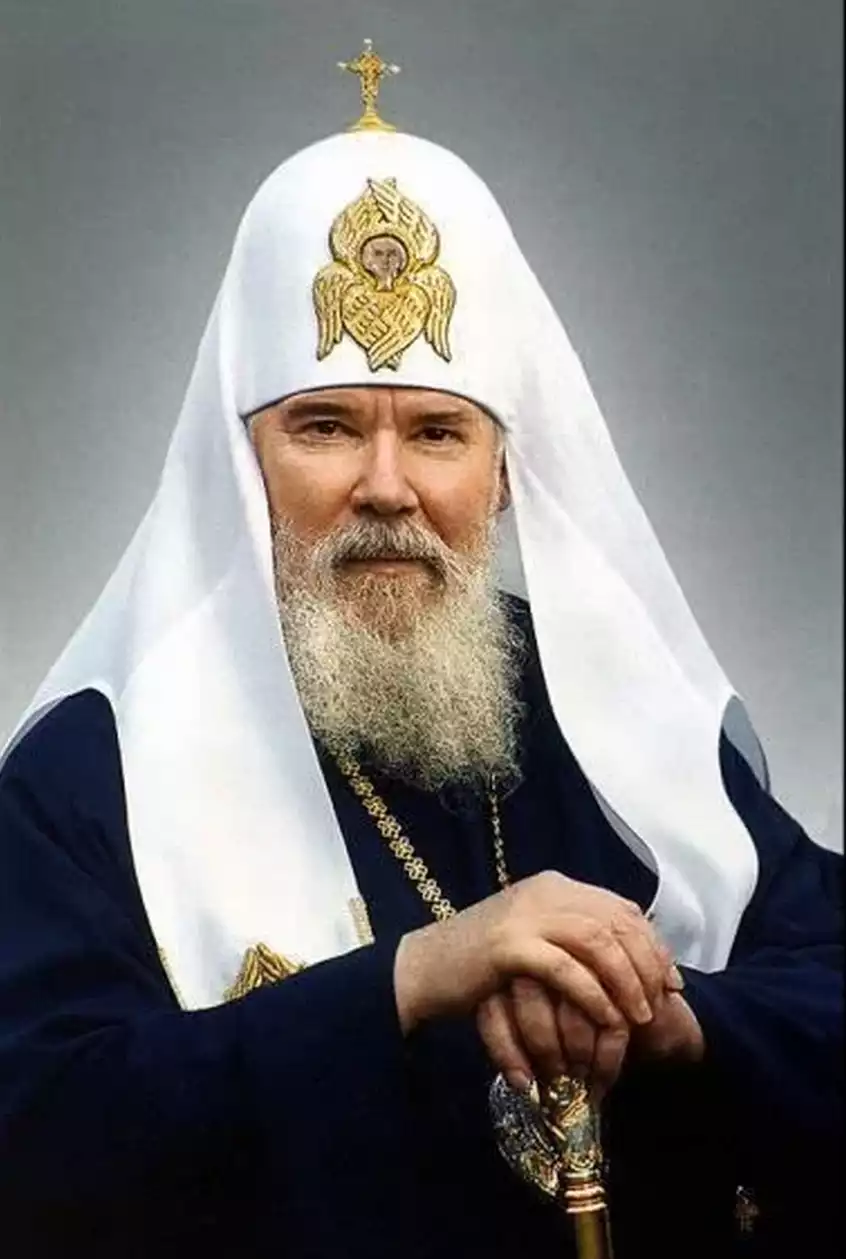
Patriarch Alexy II, who led the Russian Orthodox Church from 1990 until his death in 2008, presided over the revival of his faith in post-Soviet Russia. As the first Russian patriarch to travel widely abroad and engage with religious leaders from other faiths, Alexy sought to raise the profile of Orthodoxy globally. However, his patriarchate was also marked by allegations of cooperation with the KGB during the Soviet era as well as charges of intolerance towards Catholic leaders and other minority Christian denominations within Russia. Nevertheless, church membership boomed under the calculating yet charismatic Alexy, earning him the reputation as an “Iron Patriarch” who returned the Orthodox faith to prominence after seven decades of repression and decline.
How Alexy II Resurrected the Russian Orthodox Church
When Alexy II was enthroned as the Patriarch of Moscow and all Rus’ on June 10, 1990, he took charge of a religious institution that had been brought to its knees by decades of communist repression. The Russian Orthodox Church had endured systemic attacks on its clergy, property, and funds since Vladimir Lenin’s Bolshevik revolution in 1917. Thousands of churches were destroyed or converted to secular uses under Soviet dictator Joseph Stalin, leaving fewer than 7,000 in active use by 1939. Monasteries were dissolved while priests were executed or condemned to the gulag prison camps. The KGB infiltrated the highest levels of church leadership, influencing policies and promoting candidates who would demonstrate loyalty to the officially atheist state.
It was only with the rise of reformist Soviet leader Mikhail Gorbachev in 1985 that pressure began lifting on religious institutions. Legislative reforms in 1990 finally restored key civil liberties, enabling Alexy to take control of a church emerging from seven dark decades. As he told a German interviewer just a month into his tenure, “We have a lot to do to make up for all that was destroyed by Communist rule.”
Indeed, Alexy immediately got to work expanding, rebuilding, and reorganizing the creaking Orthodox infrastructure he inherited. He consecrated hundreds of new churches and monasteries to reopen them for worship, welcomed once-exiled Russian Orthodox leaders and theologians back from abroad, and vastly increased the number of seminary students training to become priests. Church restoration became both a literal and figurative activity as crumbling buildings and frayed institutions were given new life.
Just as importantly, Alexy maneuvered to protect the church’s newly regained autonomy from state interference. He aimed to lead a faith that would remain domestically influential while operating independently from government powerbrokers. “Neither state bureaucracy nor provincial administration,” Alexy told administrators in 1991, “should be able to exercise uncontrolled authority in territory which is canonically Orthodox.”
The patriarch’s recalibration of church-state relations proved mutually beneficial. By the mid-1990s, the Russian Orthodox Church’s special status was enshrined within new federal laws, while preferential government policies helped raise funds for Alexy’s restoration efforts. In turn, he backed the Kremlin politically when expedient to do so.
Alexy also broadened the church’s global vision, becoming the first leader of his faith to venture outside the Eastern bloc. His extensive travels took him everywhere from Israel and Cyprus to Japan and the United Kingdom, even meeting Pope John Paul II in Rome – a momentous first for a Russian patriarch. Such trips projected Alexy as the international envoy of Russian Orthodoxy and opened dialogue between faiths divided for nearly a millennium.
Domestically, the patriarch’s support proved crucial for post-Soviet leaders like Boris Yeltsin and Vladimir Putin, bestowing moral legitimacy on their administrations by blessing their policies. This backing did not pass without controversy, however, as critics accused church leadership of excessive coziness with politicians. Supporters regarded it as a pragmatic mutual understanding between church and state – one that catalyzed a remarkable religious renaissance. By the time Alexy died in 2008, his church could claim over 150 million members globally.
The legacy of the man dubbed the “Iron Patriarch” was thus one of contradictions – compromises with dictators during the Soviet era, rapprochement abroad afterward; suspected KGB collaboration early on, yet steadfast reconstruction of Orthodox infrastructure later; allegations of cronyism alongside the undeniable resurrection of a battered faith. As Russian Presidents, priests and parishioners alike paid homage after Alexy’s death, he was eulogized as the leader who returned the Russian Orthodox Church to its former glory after the ravages of communism. The church he rebuilt would continue shaping Russia for decades to come.
In the 18 years Alexy II led the Russian Orthodox Church, he made pragmatic choices that catalyzed the resurrection of his battered and suppressed faith in the post-Soviet era. Through visionary leadership, political savvy, global engagement, and sheer force of personality, he brought Orthodox Christianity back from the brink of obliteration under communist rule. While controversial in death as in life, the legacy of the “Iron Patriarch” endures via the thousands of reconstructed churches and monasteries, millions of reengaged worshippers, and restored prestige of an institution that continues shaping Russian society today.
References
Goldman, M. (2008). Alexy II, Patriarch of Russia, Dies at 79. New York Times.
Knox, Z. (2018). The Russian Orthodox Church. Routledge.
Fagan, G. (2015) Believing in Russia: Religious Policy after Communism. Routledge.
Bourdeaux, M. (2004). Patriarch and prophets: Persecution of the Russian Orthodox Church Today. Westminster College.
Payne, D.P. (2010). Spiritual Security, the Russian Orthodox Church, and the Russian Foreign Ministry. Journal of Church and State. 52(4), 712-727.
